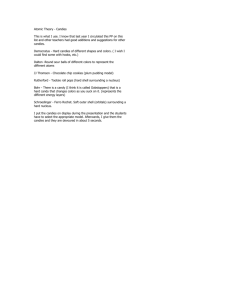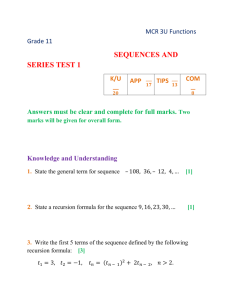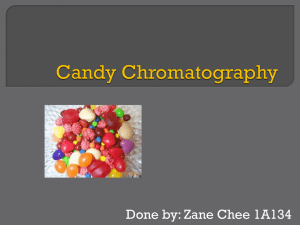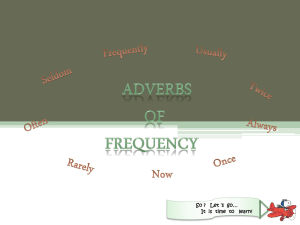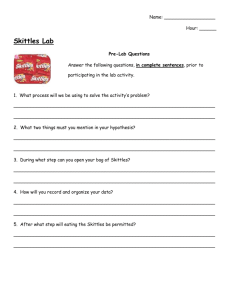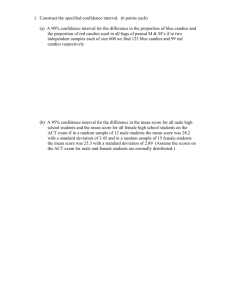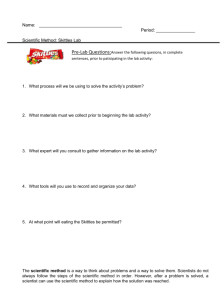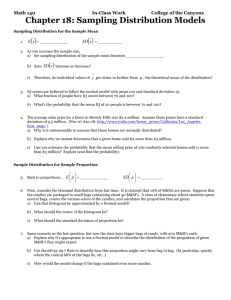Words to Symbols
advertisement
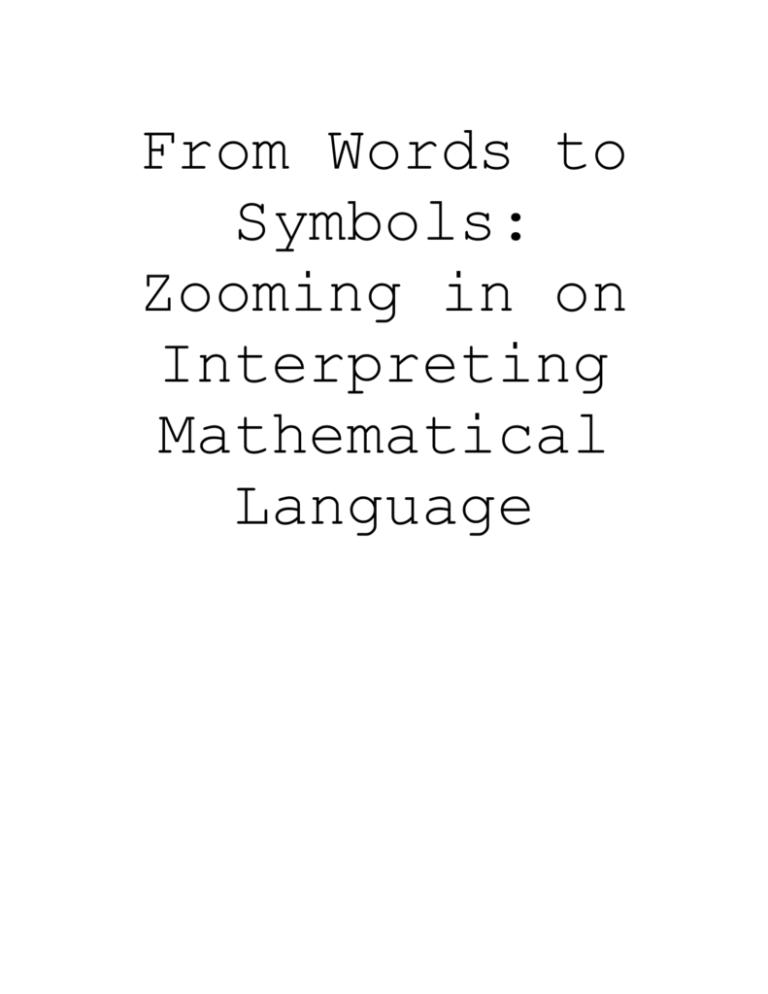
From Words to Symbols: Zooming in on Interpreting Mathematical Language About Translating Words to Symbols Caution: Attaching Key Words to Specific Operations Can Cause Problems Research has found that while teachers try to help identify key words to support student thinking, students use key words to abandon reasoning about the problem (Kenney, Hancewicz, Heuer, Metsisto, Tuttle, 2005; Sowder, 1988). The reasons why a “key-word approach” can be detrimental to comprehension include: (1) key words often have multiple meanings; (2) the list of key words grows and grows over the years making it difficult to remember; (3) the key words might indicate an operation, but the question may be asking for more than the response to a computation; (4) key word search doesn’t help students understand the meaning of the problem; (5) for problems that involve multiple steps, it doesn’t work and students are then illprepared to read for understanding. Instead, students need opportunities to find meaning in the reading; (6) phrases can shift the meaning of words in the phrase. For example how, many, and how many signify different things in mathematics; and (7) addition of (or removal of) a single letter changes meaning (e.g. percent of versus percent off, ten versus tens) Appropriate (and Expanded) Attention to Key Words It is important to develop vocabulary that is specific to mathematics. This point may seem to contradict the previous section, but there is an important distinction. In the “key word” approach, students memorize that a word (e.g., difference) means to “subtract” regardless of the content of the sentence; In a precision-of-vocabulary approach, students become familiar with the common phrases (e.g., more than) and relationships among words (e.g., if – then) and how that interacts with the rest of the sentence. Sullivan (1982) found that students dramatically improved their computation scores when she spent time explicitly teaching the meaning of the following words: a, are, can, the, is, who, find, one, ones, ten, tens, and, or, number, numeral, how, many, how many, what, write, it, each, which, do, all, same, exercises, here, there, has, and have. Help students know what these words mean in the context of the story - a very different task than asking students to define. Example: Helping students to understand what “it” is in a story and how to find out what “it” is more broadly, can help students answer the question, “How much will it cost?” Translating Words to Symbols: Steps for Supporting Student Reasoning (think of this like the four steps to problem solving – help students turn this into an internal mechanism for figuring out how to go from words to symbols). 1. Develop Qualitative Understanding Ask questions that help understand the relationship among the items in the story (e.g., “Are there more ____ than ____?”) 2. Develop Quantitative Understanding Ask questions that help move towards general case, like examples, substituting. (e.g., “Suppose there were 100 ___, how many ___ would there be?”) 3. Develop Conceptual Understanding Ask all students to write their equation. Discuss the equations – if they don’t work, why not? If two different ones work, are they equivalent? Ask students to check their rule by substituting in some values and see if it turns out the way that they think it should (based on questions 1 and 2). Lochhead, J. & Mestre, J. P. (1988). From words to algebra: mending misconceptions. In The Ideas of Algebra, 1988 Yearbook of the National Council of Teachers of Mathematics. Reston, VA: NCTM. Helping Students with Translation: Words to Symbols Lesson Plan – The next page is NOT a student activity sheet, as these prompts get tricky too fast. They are a sampling of the types of phrases to pose to students. Option 1: Use problems like these as WARM UPS – Imagine if students did one a day, each day getting a little trickier, how they could move forward in this critical area!! Option 2: Full lesson - Develop 5-8 at the level of items 1 – 3. Discuss. Use the three step strategy on previous page to work with students on how to translate. Day 2: Move on to harder translation problems. Option 3: The Game of Telephone. This is best after doing some of Option 1 and 2. This is words to symbols and symbols to words. ++++++++++++++++++++++++++++++++++++++++++++++++++++++++++++++++++++ +++ Translate each English sentence into mathematical language. Use letters that fit the situation. For example, use F for “Fred’s income.” 1. The combined incomes of Fred and Harry equal $490. Math Language: 2. A man worked for 20 hours at $3 an hour plus 10 hours at $5 an hour for a total of $110. Math Language: 3. Larry is four times as old as his son Bob. Math Language: Hint: Rewrite the sentence with the word “equals” in it. 4. Ten pounds less than 50 pounds equals 40 pounds. Math Language: (the answer is not 10-50 = 40) 5. Four more than five times a number equals one less than six times that number. Math Language: (the answer is not 5n + 4 = 1 – 6n) 6. A man worked a certain number of hours at #3 an hour and the same number of hours plus 20 more hours at $4 an hour earning a total of $150. Math Language: (the answer is not 3n + n = 20(4) = 150) A sampling of problems from Developing Mathematical Skills by Whimbey and Lochhead, 1981. Classic Translation Tasks Note: These are all one-step equations, yet the equations seem counterintuitive based on students prior experiences with muliplication. Even adults can have trouble with the distinctions. Use the three-step process provided above and see if your students can think through these strategically! 1. Write an equation using the variables S and P to represent the following statement: “There are six times as many students as professors at this university.” Use S for the number of students and P for the number of professors. 2. Write an equation using the variables C and S to represent the following statement: “At Mindy’s restaurant, for every four people who order cheesecake, there are five people who order strudel.” Let C represent the number of cheesecakes and S represent the number of strudels ordered. 3. Write a sentence in English that captures A = 7S, where A is the number of Assemblers in a factory and S is the number of Solderers in a factory 4. A man takes a photograph of some of the cows and pigs in a large field full of cows and pigs. He is sure that he has photographed a typical sample for the animals in the field. Write an equation to describe the relationship between C, the number of cows, and P, the number of pigs, in the field. The equation should allow you to calculate the number of cows if given the number of pigs. 5. Write an equation that can be used to calculate the number of feet in a measurement given the number of yards. Use F for feet and Y for yards. Game of Telephone (with an Algebra Twist) 1. Prepare one 3 by 5 card for each group. Label each card with a different letter (A – F, for example). One each card write one of the phrases like the ones listed on the next page (you decide how difficult they should be). 2. Give each group a stack of blank 3 by 5 cards (if there are five groups). 3. Give students their first prepared card. Ask them to take the letter on that card and write it on one of their blank 3 by 5 cards and a 1 to indicate Round 1 (for example, A-1). 4. On that newly labeled card, they are to write the expression that fits the statement. DO NOT SOLVE. 5. When groups are finished, ask them to pass only they card they prepared (with the expression or equation) to the next group (they must keep the original secret). 6. Round 2. Now each group has an equation. Ask each group to take a blank card and give it the letter of the card they just received and a 2 for round 2 (for example, A-2). Ask them to write the words that could be use to get the expression or equation they received. (they can be creative or just straight forward). 7. When groups are finished, they pass their sentence(s) to the next group. 8. Repeat this process until the A problem is back with the group that first had A and each group has their original probem back. 9. Each group studies the progression of their problem and see if it maintained equivalence through all the groups. If not, what went wrong. 10. Provide time for students to share where their equations went off track and why and/or to show how they knew the expressions were equivalent. M & M Equations Lesson Objectives: Students will be able to write an equation from words. Students will be able to solve one- and two- step equations for a variable. Materials: M&Ms one bag per group of students and one for the teacher Recording sheet (one per group) Note Card (one per group) Activity Instructions: 1. Explain to students that they are going to be using algebra equations to figure out how many of each color of M&Ms someone else has. 2. Open the teacher bag and record on the board how many of each color are in the teacher bag. 3. Tell students that in a minute they are going to be counting their M&Ms and recording it on their notecard – but they must keep it secret from the other groups. 4. Allow students to open and count their M&Ms. 5. Distribute the Recording Sheet (part 1). Ask students to write their group’s name at the top. 6. Model how to do the first one by pretending that some group has 10 red candies, showing how they would fill in the first question. For example, if the teacher bag had 8 red candies, the first line would read: 1. I would have to add (or eat) _2__ red candies to have the same number of red candies as the teacher. How many red candies do I have? 7. Ask students to do this for the other stories on their paper, still keeping their numbers a secret. 8. Once all groups are done, they exchange papers with another group. 9. Explain that students are now going to write an equation to model the story and then solve the equation to figure out the number of red M&Ms, etc. Model how to do the first one by continuing with the example you had started before. 1. I would have to add (or eat) _2__ red candies to have the same number of red candies as the teacher. How many red candies do I have? _r = 10___ Equation: r – 2 = 8 [r is the number the group has, they eat two, which is subtracting 2, and get the teachers amount of 8]. 10. Observe students as they are working, making sure they are using equations with a variable and that they are solving it. 11. When students are finished, they will have a list of the number of each M&M the other group has. Then they meet up with the group that they traded with to see if they solved the problems correctly (you can have one person in each group meet with one from the other or do one larger group). 12. In debriefing, have students volunteer ones that didn’t work out – and the class can find the error. This really helps students sort out their own misconceptions. NOTE: Part II can be done the same way (these are harder), or can be done with individuals, then exchanging with a partner. Activity Source: Borlaug, V. (1997). Building equations using M&Ms. Mathematics Teaching in the Middle School, Reston, VA: NCTM. M & M Equations: Part 1 Group Name(s)_______________________________________________ 1. I would have to add (or eat) _____ red candies to have the same number of red candies as the teacher. How many red candies do I have?_______ Equation: 2. I would have to add (or eat) _____ orange candies to have the same number of orange candies as the teacher. How many orange candies do I have?______ Equation: 3. If I doubled the number of tan candies I have, then I would have _____ tan candies. How many tan candies do I have?______ Equation: 4. If I had half the number of brown candies that I have, I would have ____ brown candies. How many brown candies do I have?_____ Equation: 5. If I tripled the number of green candies I have, then I would have ____ more (or less) than the teacher. How many green candies do I have?________ Equation: 6. If I added 15 yellow candies to my bag, the teacher would have to add ______ yellow candies to his or her bag for us to have the same number of yellow candies. How many yellow candies do I have?______ Equation: 7. If I double my blue M&Ms, then I would have ______ more (or less) than the teacher. How many blue M&Ms do I have?______ Equation: M & M Equations: Part 2 Name(s)___________________________________________________ 1. If I tripled the number of yellow candies I have, I would have _____ more yellow candies than the teacher. How many yellow candies do I have? Equation: 2. If I ate 3 of my orange candies, then put my orange candies together with the teacher’s orange candies, we would have ______orange candies. How many orange candies did I start with originally in my bag? Equation: 3. Suppose another student had a bag of M&Ms exactly like mine. So we each started with the same number of each color candy. If we combined our candy, then I ate 5 of our red candies, we would have ______ red candies left. How many red candies did I start with originally in my bag? Equation: 4. My brown, yellow, and green candies total ______. I have _______ more (or fewer) brown candies than yellow candies. I have _______fewer (or more) green candies than yellow candies. How many brown candies do I have? How many yellow? How many green? Equation: Borlaug, V. (1997). Building equations using M&Ms. Mathematics Teaching in the Middle School, Reston, VA: NCTM.
